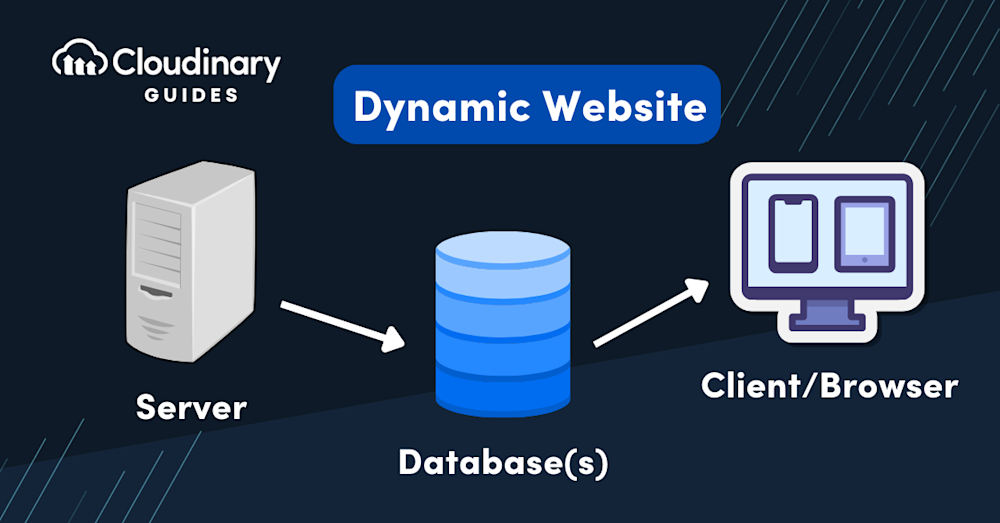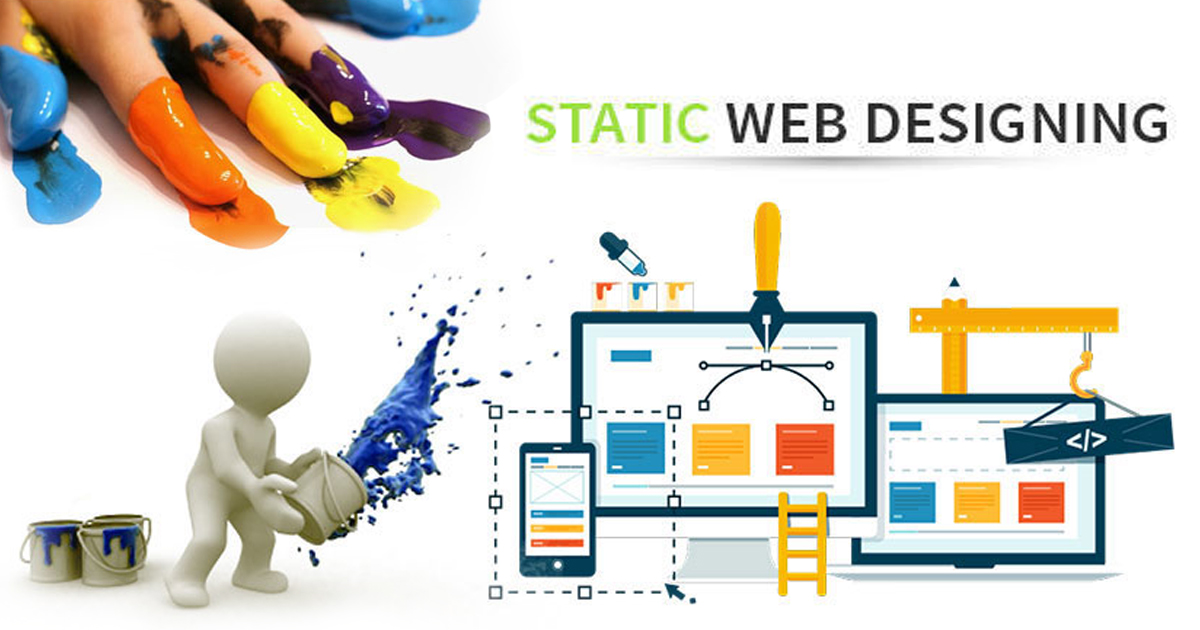
Dynamic Web Design And Development
- Duration: 90 Hours
- Total Fees Rs: 6999.00/-
Course Title: Comprehensive Dynamic Web Designing with HTML, CSS, JavaScript, Bootstrap, and PHP
Course Duration: 180 Days/Hours
Course Level: Beginner to Intermediate
Prerequisites: Basic knowledge of HTML and CSS
Course Overview:
The digital world demands more than just aesthetically pleasing websites; it requires dynamic, interactive, and responsive designs that can adapt to user input and provide a customized experience. This course, "Comprehensive Dynamic Web Designing with HTML, CSS, JavaScript, Bootstrap, and PHP," is meticulously crafted to equip students with the skills needed to create dynamic websites that are not only visually captivating but also functionally robust.
Throughout this 180 days course, you will dive deep into the world of dynamic web design, exploring the synergy between front-end technologies like HTML, CSS, JavaScript, and Bootstrap, and the back-end capabilities of PHP. By the end of this course, you will be able to design and develop fully dynamic websites that interact with databases, manage user sessions, and provide tailored content to users.
Course Objectives:
Upon completion of this course, students will be able to:
- Understand the role of front-end and back-end technologies in dynamic web design.
- Develop dynamic and interactive web pages using HTML, CSS, JavaScript, and Bootstrap.
- Implement server-side programming using PHP to handle user inputs and manage data.
- Connect and interact with databases using PHP and MySQL.
- Create secure and efficient web applications with user authentication and session management.
- Develop and deploy a fully functional dynamic website as a capstone project.
Course Content:
Module 1: Introduction to Web Development
-
Understanding Web Technologies:
- Overview of web development: Static vs. Dynamic Websites
- The client-server model in web applications
- Overview of front-end and back-end technologies
-
Setting Up Your Development Environment:
- Installing and configuring a local development server (XAMPP/WAMP)
- Introduction to IDEs and text editors (VS Code, Sublime Text)
Module 2: Advanced HTML5 for Dynamic Web Pages
-
HTML Refresher:
- Recap of essential HTML tags and attributes
- HTML5 semantic elements:
<header>,<footer>,<section>,<article>, etc.
-
Forms and Inputs:
- Creating and managing complex forms
- Handling form submissions with server-side validation
- Introduction to form validation using both JavaScript and PHP
-
Embedding Media and Interactive Content:
- Adding videos, audio, and interactive elements
- Introduction to HTML5 APIs (e.g., Geolocation, Canvas)
Module 3: Advanced CSS3 and Responsive Design with Bootstrap
-
Advanced CSS Techniques:
- CSS3 transitions, transforms, and animations
- Understanding and implementing responsive design using media queries
- Creating layouts with Flexbox and Grid
-
Introduction to Bootstrap:
- Setting up and using Bootstrap in your projects
- Bootstrap grid system for responsive design
- Utilizing Bootstrap components (navbars, modals, cards, etc.)
-
Customizing Bootstrap:
- Overriding Bootstrap styles with custom CSS
- Best practices for creating consistent and responsive designs
Module 4: Introduction to JavaScript and DOM Manipulation
-
JavaScript Essentials:
- Overview of JavaScript syntax and data types
- Working with variables, functions, and events
- Control structures and loops
-
DOM Manipulation:
- Understanding the Document Object Model (DOM)
- Selecting and modifying DOM elements
- Handling user events and dynamic content updates
-
Form Validation with JavaScript:
- Implementing client-side form validation
- Enhancing user experience with dynamic feedback
Module 5: Introduction to PHP for Dynamic Websites
-
Getting Started with PHP:
- Introduction to server-side scripting with PHP
- Embedding PHP code in HTML
- Understanding PHP syntax, variables, and data types
-
Control Structures and Functions in PHP:
- Using conditional statements (if, else, switch)
- Loops in PHP (for, while, foreach)
- Defining and using functions in PHP
-
Working with Forms and User Input:
- Handling form data with PHP’s
$_GETand$_POSTvariables - Validating and sanitizing user input
- Error handling and displaying user-friendly messages
- Handling form data with PHP’s
Module 6: Database Integration with MySQL
-
Introduction to Databases:
- Understanding relational databases and SQL
- Setting up and managing MySQL databases
- Introduction to phpMyAdmin for database management
-
Connecting PHP with MySQL:
- Establishing a database connection using PHP
- Executing SQL queries from PHP
- Performing CRUD operations (Create, Read, Update, Delete) with PHP and MySQL
-
Building Dynamic Content:
- Displaying data from a database on a web page
- Using loops to display dynamic lists and tables
- Creating dynamic navigation menus and content sections
Module 7: User Authentication and Session Management
-
User Authentication with PHP:
- Implementing user registration and login systems
- Hashing and securing passwords with PHP
- Creating a user authentication flow
-
Managing Sessions and Cookies:
- Understanding PHP sessions and cookies
- Implementing session-based authentication
- Managing user data across pages with sessions
-
Securing Web Applications:
- Preventing common security threats (SQL Injection, XSS, CSRF)
- Best practices for securing dynamic web applications
Module 8: Project Development and Deployment
-
Planning and Designing a Dynamic Website:
- Project planning: Defining objectives and requirements
- Creating wireframes and designing user interfaces
-
Building the Project:
- Structuring your project files and directories
- Integrating front-end and back-end components
- Implementing CRUD operations and user authentication
-
Testing and Debugging:
- Debugging PHP code and resolving errors
- Testing database queries and connections
- Ensuring cross-browser compatibility and responsive design
-
Deploying Your Website:
- Preparing your website for production
- Configuring a web server and uploading files
- Testing your live website and troubleshooting issues
Module 9: Capstone Project
-
Project Description:
- Develop a fully functional dynamic website as your capstone project
- The project should include features like user authentication, data management, and dynamic content display
- Examples: E-commerce website, blogging platform, content management system, etc.
-
Project Submission and Presentation:
- Submit your project for evaluation
- Present your project to the class, highlighting key features and technologies used
- Receive constructive feedback and suggestions for improvement
Module 10: Advanced Topics and Future Learning
-
Exploring Advanced PHP Concepts:
- Introduction to PHP frameworks (Laravel, CodeIgniter)
- Advanced database operations and ORM (Object-Relational Mapping)
- Implementing AJAX for seamless user interactions
-
Improving SEO and Performance:
- Optimizing dynamic websites for search engines
- Implementing caching and performance improvements
- Managing large-scale dynamic websites
-
Career Pathways in Web Development:
- Exploring career opportunities as a full-stack developer
- Building a professional portfolio and preparing for job interviews
- Networking and continuing education in web development
Assessment and Certification:
The course includes continuous assessment through assignments, quizzes, and practical exercises. The capstone project will serve as the final assessment, where students will apply their skills to create a complete dynamic website. Upon successful completion, students will receive a certificate, showcasing their expertise in dynamic web design using HTML, CSS, JavaScript, Bootstrap, and PHP.
Conclusion:
This course is perfect for aspiring web developers looking to advance their skills in dynamic web design. Whether you aim to build sophisticated web applications or simply enhance your existing websites, this course provides the tools and knowledge you need. By the end of this course, you will be equipped to design and develop dynamic, responsive, and secure websites that meet modern web standards.
Enroll now and start building the future of the web!

